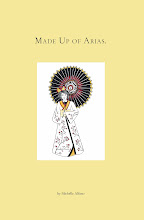
Thi story has elements of classic suspense film "The Bad Seed", Jane Eyre and the movie "Whatever Happened to Baby Jane" sprinkled with a very real post-Holocaust anxiety.
Something horrible has happened to the Blackwood family. The parents of the two girls in the story, a brother and an aunt all died of arsenic poisoning consumed through a sugar bowl during a family meal. All fingers point to Constance, the older of the two sisters, who cooked the meal but Constance was acquitted of the crime.
Now they live in isolation in their mansion with Uncle Julian, their father's brother, who somehow escaped the carnage, surrounded by suspicious and hate-filled townsfolk who wish them ill.
This book, at least initially, reads more like young adult fiction - perhaps I was influenced by the slightly gothic, graphic novel style cover featuring the main characters Constance and Merricat Blackwood surrounded by ominous looking townspeople.
Merricat (short for Mary Katherine) despite her odd interest in poisonous mushrooms and fantasy worlds appears to be, initially, a lovely, whimsical creature living an almost enchanted life despite what has happened. She buries "treasures" in the landscape near their home, ("All our land was enriched with my treasures ..." ) and weaves fantastic tales about life on the moon for her sister: "on the moon we wore feathers in our hair, and rubies on our hands." She plays with her cat; she summons up magic words to protect herself and her family, practices acts of magic.
Merricat is fanciful, a bit strange, and, potentially it seems, a ruthless opponent intent on eliminating certain unpleasant elements from her quiet life peopled only by her sister Constance, innocuous Uncle Julian and cat Jonas. When cousin Charles appears on the scene, we see the true extent of Merricat's powers and malignant feelings ...
Fiction writer Jonathan Lethem's introduction is particularly insightful; he describes Merricat as the image of a "presexual tomboy" although she is 18 - with a fear, I think, of maturity, of growth, of the inevitable fertility of femaleness. This is why Constance's attraction to cousin Charles is so threatening to Merricat.
Constance is her blue eyed, blonde haired princess, the idea of Charles "defiling" or even merely attracting Constance is too threatening for Merricat who takes to reciting the poisonous properties of local mushrooms within his hearing. Constance, hidden away in the house, is a sort of domestic goddess, cooking for all, pickling, baking, "neatening" the house, caring for the family heirlooms, protecting Merricat and all her secrets.
As Lethem points out, it seems that the "male principle" is a source of danger and fear for Merricat. Uncle Julian doesn't count; he is incapacitated in a wheelchair, neutered somewhat, incontinent, sometimes mentally confused and incapable of seizing control of the situation or the girls' lives - he is utterly dependent on them. Perhaps that was why he was spared that fateful night. All males (father, brother, now cousin Charles) and female authority figures (her mother, her aunt) must be eliminated. But Merricat, despite her oddity, has excellent instincts about who is a danger to her world and acts accordingly.
Jackson owes more than a little to the plot of Jane Eyre which adds to a suspenseful and chilling ending. For more Jackson read the short story "The Lottery", an even more frightening twist on paranoia and misanthropy.









No comments:
Post a Comment